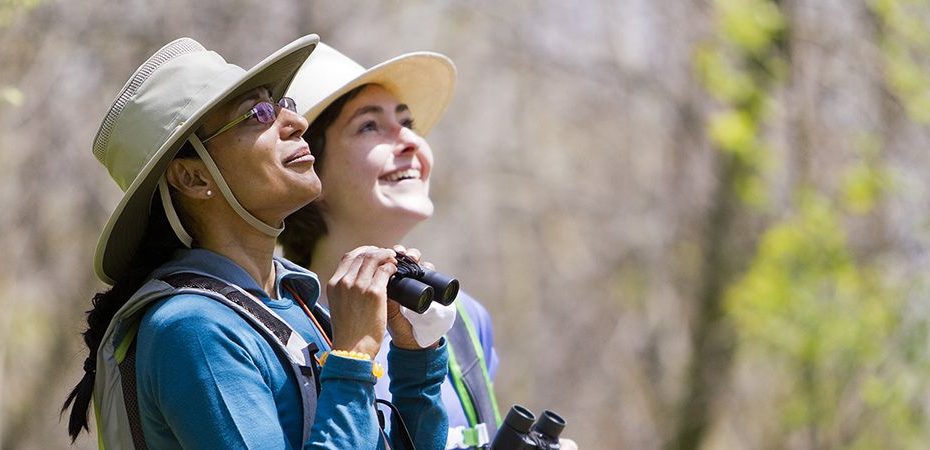Do you feel it? The weight of the world?
With pandemics, political discord, climate change, species depletion, habitat destruction, and pollution (just to name a few existential threats), many of us may feel hopeless, paralyzed, or even apathetic. But if too much bad news is getting to you, there is something you can do.
Redeem this moment and step outside.
Keep reading to find out creative and engaging ways to activate your senses when you are outdoors and deepen your connection to the natural world.

Shorten Your Screen Time
Spending time in nature is essential for our wellbeing, yet it is astonishing how much time we spend in front of our devices. A study by Alcon Canada reveals that the average Canadian millennial spends an average of 11 hours per day staring at a glowing screen. Meanwhile, excessive screen time is linked with poor sleep and increased risk factors for cardiovascular diseases, obesity, increased cortisol (the stress hormone), rising levels of anxiety and poor self-regulation. New evidence suggests that the more time we spend on screens, the more likely we are to feel depressed, lonely and disassociated with the world around us.
On the other hand, time spent in nature has been shown to boost our serotonin levels, making us feel happier. Simply breathing in forest air boosts our immune system and seeing the colour green reduces stress. So, if you can, take some time today to step outside and try the exercises outlined below.

Awaken Your Senses
Cup your hands, squeeze your fingers together and slip them behind your ears. Now push your ears forward. Notice how much better you can hear? Can you hear the whoosh of wind as it strums the boughs of a nearby pine? Move your head slowly from side to side. Look around you – all the way around. Marvel at the incredible shades of colours, the sheen of light reflecting off that pine, the deep blue of the sky and the folds of white and grey in the clouds overhead. Rub your fingers along the grooves of your fingertips and feel the nerve endings, which has receptors called Meissner’s corpuscles that respond to the slightest pressure such as a gentle caress or the sweep of a cool breeze. Take one large breath and focus on the smell of the air around you. With every breath in and out (we take 20,000 of these per day), we pick up odours – and in case you didn’t know, we can detect millions of them. Rub your tongue across the roof of your mouth. Can you feel the texture of your taste buds? Crammed in our mouth and shaped like tiny volcanoes, our more than 10,000 taste buds help us to detect the faintest of flavours.

Our Senses are “Nature’s Pipeline”
Our environment is a delightfully textured tapestry of sound, sight, taste, feel and smell. Nature has graced us with marvelous sensory abilities – senses that enable us to connect to the world around us in a deep and abiding way. And in a way that technology simply cannot replicate.
Think about your senses as “nature’s pipeline” – your most direct connection to the natural systems that sustain us all. To soak the world in through all of our senses takes practice, mindfulness and deliberation. Some people have argued that in today’s modern world, we and our children are suffering from a measure of sensory anesthesia – a dulling of our senses. Remember this: with time spent in nature with all our senses awakened, we feel more alive and more in tune with the world around us. By immersing ourselves and our children again and again in natural spaces, we’ll come to cherish them and reimagine them, not just as places to go but as part of our family, our community.

Savour the Scents of your Surroundings
To really savour nature takes practice. You can savour the scents of the forest by learning how to distinguish between the different smells, shapes, textures of various confiner needles such as spruce, hemlock, pine and cedar. Reach under a rock and see if you can recognize the various textures and shapes of natural objects hidden underneath.
By coming to nature with all of your senses primed and activated, you’ll come to appreciate it in a whole new way. You’ll be nourished, inspired and refreshed, recognizing that you belong to something larger than yourself, and in belonging, you’ll feel more complete. And perhaps, just perhaps, you’ll feel the weight of the world beginning to lift.
